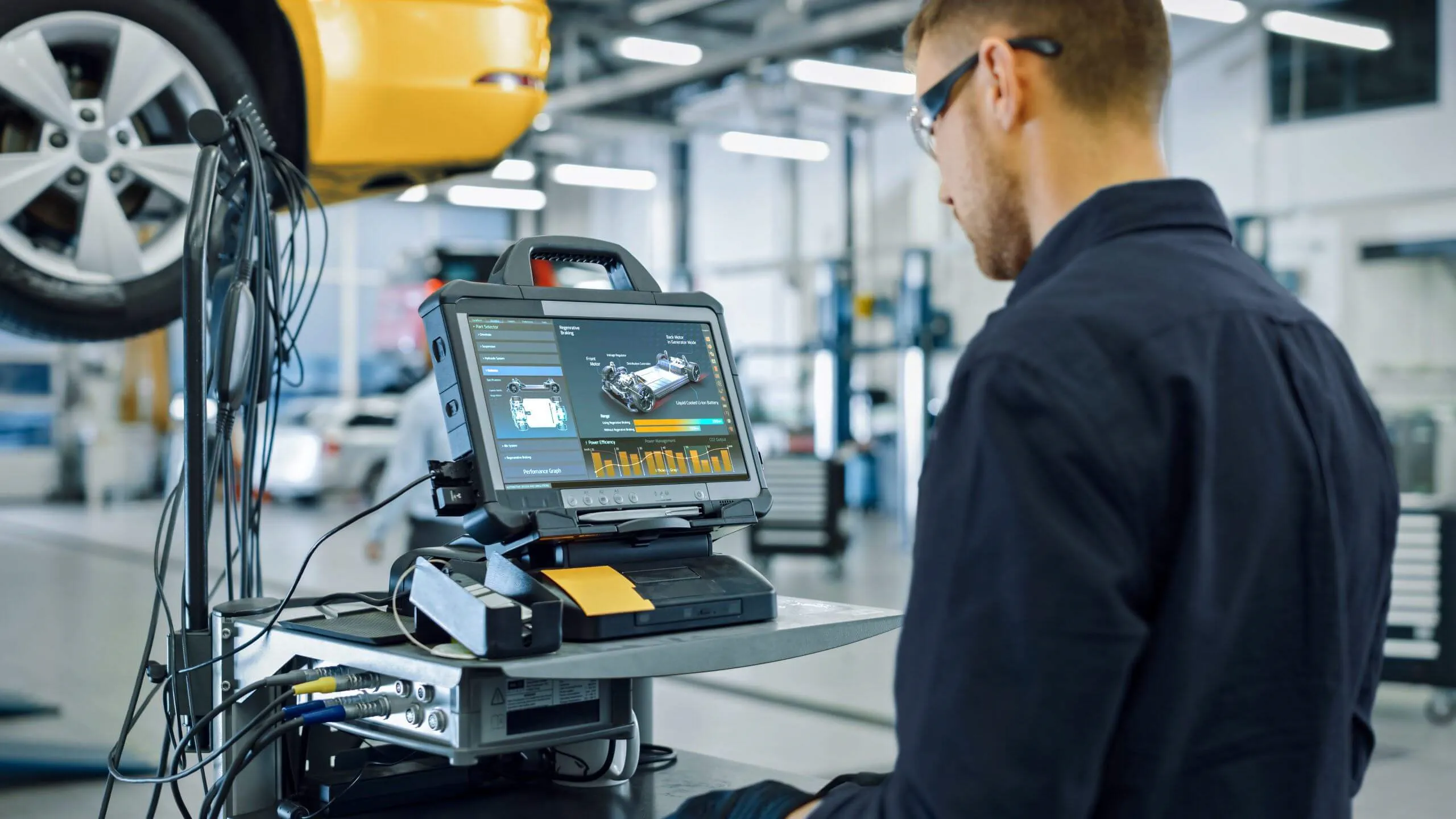
The big change which e commerce has on retail is very clear. More and more shoppers are going online for their purchases, making last mile delivery very important if customer satisfaction and the success of the business are to be sustained. This article will closely look at what market research has to say about last mile delivery, underlining key trends, major challenges, and new ideas that change this important part of the contemporary supply chain.
I. The E-commerce Tsunami and Last-Mile Delivery Dynamics
Changing customer behavior and the wide usage of digital technologies make online shopping constantly grow, hence putting last mile delivery into the limelight. Last mile delivery is the most critical place in the delivery process that takes care of getting a product from distribution centers to the customer thus, it is something an online business, desiring to stay competitive, could not ignore.
According to the market research, last mile delivery service is clearly on the rise due to the fast growth of online shopping. This demand gives them high expectations: fast and reliable delivery options that greatly shift the way retailers and delivery companies plan for last mile services.
II. Consumer Expectations and the Imperative of Velocity
A key part of market research insights in last mile delivery is how much consumer expectations come into play. In a world where people want things now, there is a strong consumer demand for fast and easy delivery services. Same day and next day delivery have moved from being new ideas to becoming the standard in the industry, pushing companies to adjust their last mile operations to meet these growing expectations.
New programs, like Amazon Prime, which show the ability for swift delivery, set the bar higher forever. The unstoppable trend not only grows what customers expect but also puts competitors into a race of competitive improvements regarding delivery skills.
III. Innovations Galore: Technological Marvels in Last-Mile Delivery
Market research underlines the fact that technology in last mile delivery is an increasingly changing factor. New tools are starting to take over, such as route optimization algorithms, real time tracking, and wider deployment of autonomous vehicles. Drones and robots, once ideas of science fiction, finally stand ready to radically change last mile delivery, mainly in great cities burdened with traffic jams and congestion.
Companies also continue to monitor the efficiency of smart lockers and pick up points. They are offering a variety of options for deliveries to customers while at the same time reducing hassle when it concerns home addresses. With the assistance of IoT devices and artificial intelligence, performance will continue improving, hence making more accurate predictions in terms of delivery.
IV. Sustainability Imperatives and Ecocentric Last-Mile Endeavors
In last mile delivery, sustainability remains a key focus in light of environmental needs and what consumers want. Market research has shown indeed that the demand for eco friendly and sustainable means of delivery is high. Companies have thus used electric vehicles, bicycles, and electric cargo bikes in city deliveries that reduce carbon emission and support green initiatives.
Last mile strategies need to put extra eyes on eco friendly packaging, reusable containers, and better delivery routes to reduce their environmental impact. This is a time when awareness of environmental issues is growing, and companies that support sustainability in their processes of delivery are about to gain a competitive advantage.
V. Confronting Challenges, Crafting Solutions: The Last-Mile Conundrum
Even with modernized technology, last mile delivery still experiences several challenges. Some major issues include huge traffic jams, vehicle delays, and high costs of speeding services. Market research proves the need for collaboration, as indicated by the partnerships between online businesses and local delivery services in finding effective solutions to these problems.
While based in city areas, micro fulfillment centers are becoming one way to reduce delivery distances and accelerate the last mile of delivery. Companies are also exploring crowd sourced delivery models whereby independent workers and gig economy professionals can assist regular delivery teams during peak times.
VI. Navigating Regulatory Labyrinths: Charting the Trajectory of Last-Mile Delivery
Market research in last mile delivery shows how important it is to understand rules and regulations. As the industry changes, government groups are creating and updating rules to tackle important issues like safety, data privacy, and the easy use of new technologies. Keeping track of these rules is essential for companies to follow the law and reduce legal risks.
In the future, last mile delivery will have strong connections with further advancements in automation, AI, and sustainability. Collaboration among industry leaders, policymakers, and technology experts will be crucial for the development of rules that promote innovation and also allay public concerns.
Conclusion
While navigating these choppy waters in online shopping, e retailers need a sound understanding of the evolving world that will be last mile delivery. Market research insights are pointers to underlining the need for speed, new ideas, and sustainability in following the rules that create an effective last-mile plan. While in the digital era, with businesses working relentlessly to meet consumer demands growing by the minute, it is of paramount importance to stay abreast of the market trends and assimilate new solutions. This is the only way one can achieve success in the highly competitive world of last mile delivery.
Trending Posts

Global Silver Nanoparticles Market
The global silver nanoparticles market was valued at $2.08 billion in 2020, and is projected to reach $4.1 billion by 2027, growing at a CAGR of ~17%

LNG Bunkering – Here is something you must know!
In the current scenario of growing pollution, companies are trying to adapt more and more sustainable approach that not only gives eco-friendly result

The Basic Pension Comes - Federal Cabinet Decides On the Pension Supplement
Financial security in old age is an issue that is causing stomach pains for more and more people in Germany. Low-wage earners fear the elderly. The ba

The Future of Artificial Intelligence
In recent years, the field of artificial intelligence (AI) has witnessed unprecedented growth and transformative advancements. As AI technologies

Sailing into the future with Autonomous Ships
Autonomous Vehicles (AVs) are the uproar of this era. After airways, thanks to the companies like Tesla, that people are now getting used to see drive

Rising Demand For Uninterrupted Power Supply Is Expected To Drive The Power Rental Market
Todays world is totally reliant on electric power. There are many things which are not manageable without electricity. Power rental is a concept where

Rapidly growing IT industry coupled with the trend of bringing your own device (BYOD) is expected to provide new opportunities for growth of Cloud Collaboration
Cloud collaboration is the process of sharing and co-authoring the computer-based work through cloud technology

Factcheck on UV Disinfection for COVID-19
Many regulatory authorities and bodies believe that UV disinfection technologies can play a role in a multiple barrier approach to reducing the transm

The Global Ventilator Market Grows at a CAGR of 7.75 %
The Global Ventilator Market, which was at $688 million in the year 2016, is about to double by the year 2025, and reach a value of $1,347 million. Th

Vaccination: Vaccination Against Measles is Now Mandatory in Germany
The subject of compulsory vaccination has always heated peoples minds and caused emotionally charged discussions. The latest law in this area - the ob
Recent Posts

Growth and Future Trends of the Global In-Line UV-Vis Spectroscopy Market
In-line UV-Vis spectroscopy is a powerful analytical tool widely adopted in various industries for real-time monitoring of chemical and biological processes. This market is experiencing robust growth due to its applications in pharmaceutical.

Understanding the Growth Dynamics of the Premium Luggage Market
The market for premium luggage has grown massively over the years. This is attributed to several factors, including a change in consumer preference, increase in disposable incomes, and an overall rise in international travel.

Global Potassium Sorbate Market: Growth and Forecast
The Global Potassium Sorbate Market has gained significant traction due to the rising demand for preservatives across various industries, especially in food and beverages. Potassium sorbate, a salt of sorbic acid.

Global Venturi Masks Market Growth and Forecast
Venturi masks, also known as air-entrainment masks, play a crucial role in delivering a precise oxygen concentration to patients, particularly those suffering from chronic respiratory conditions such as COPD (Chronic Obstructive Pulmonary Disease).

Global Venous Thromboembolism (VTE) Therapeutics Market: Overview, Growth, and Forecast
Venous thromboembolism (VTE) is a critical medical condition including deep vein thrombosis and pulmonary embolism. In fact, it is one of the preventable causes of death in the hospital environment. It has experienced a substantial upsurge.

Global Vein Illumination Device Market: Growth and Forecast
The global vein illumination device market is experiencing significant growth, Due to a growing demand for minimally invasive procedures and an increase in chronic diseases, not to mention development in medical technology.

Global Vasculitis Treatment Market: Growth and Forecast
Vasculitis represents a group of disorders involving inflammation of blood vessels. It can affect parts of the body such as the skin, kidneys, lungs, and joints, and without proper treatment it may cause severe morbidity.

Global Fired Heaters Market: Growth and Forecast
The global market for fired heaters is growing at a rapid pace due to increased demand from major industries such as the oil & gas, chemical, and petrochemical sectors. Fired heaters are among the most crucial components of process heating systems.

Global Gas Flares Market Growth and Forecast
The growth in oil and gas production, environmental regulations, and a need for an effective waste gas management system are driving the global gas flares market. Gas flares are a crucial equipment in the oil and gas industry.

Global Steam Reformers Market: Growth, Trends, and Forecast
The steam reformers market is witnessing significant growth due to increased demand for hydrogen in industries like chemicals, refining, and fertilizers.
